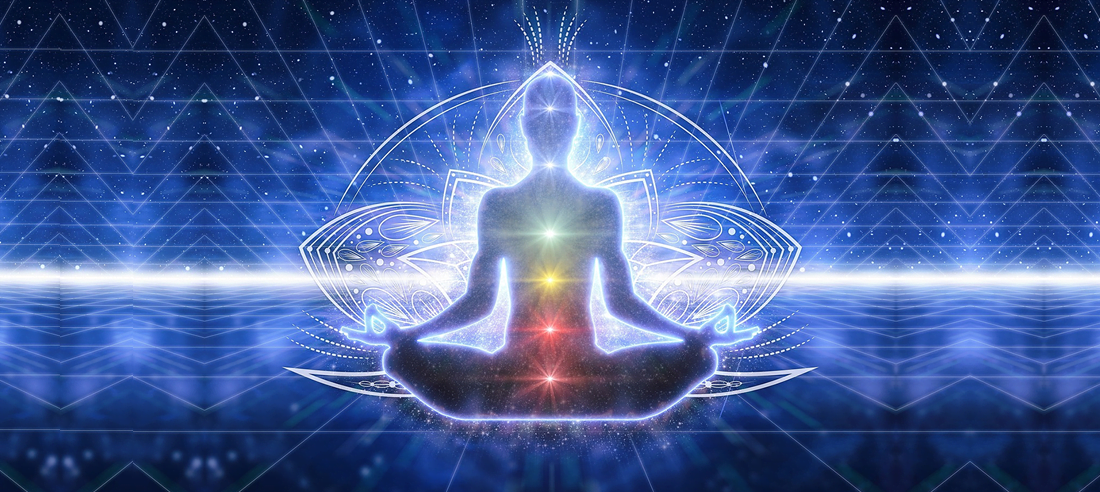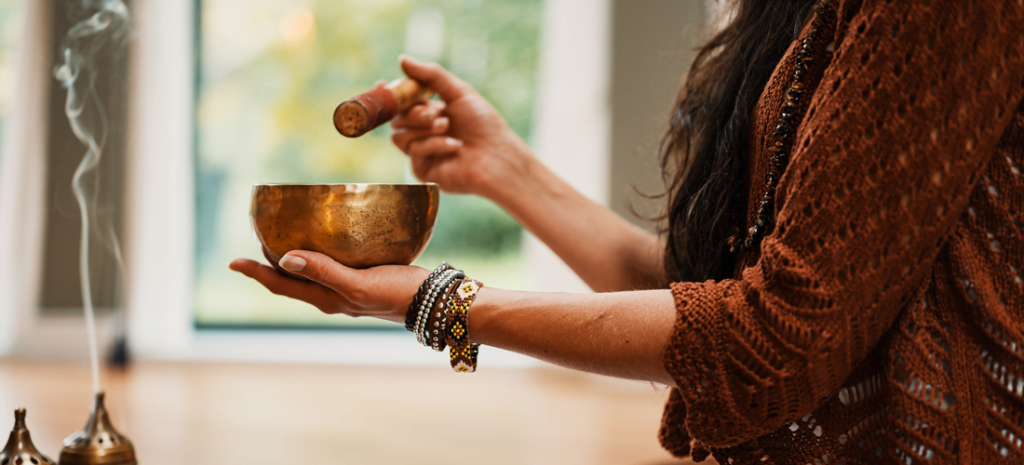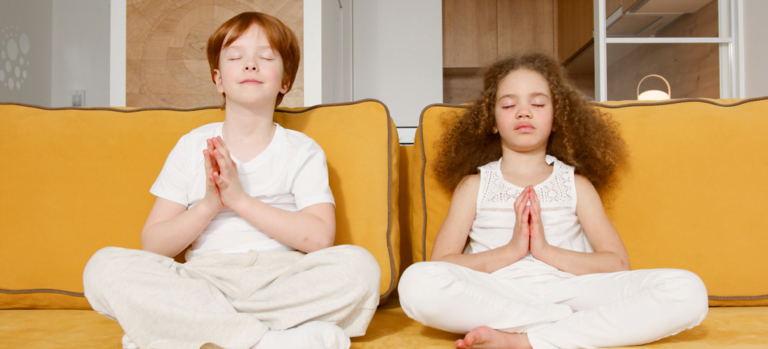The significance of chakras for spiritual healing lies in their role as pathways for our life force, or ‘prana.’ Chakras, a term derived from the Sanskrit word for “wheel,” refer to the energy centers within our bodies.
These spinning wheels of energy are located along our spine, from its base to the crown of the head. There are seven main chakras, each associated with specific organs, psychological, emotional, and spiritual states.
When our chakras are in balance, energy can flow freely, leading to a sense of peace, harmony, and wellness. However, imbalances or blockages can cause physical illness, emotional instability, or spiritual disquiet. Engaging in chakra-focused practices can help restore this balance, promoting overall health, vitality, and spiritual well-being.
The Seven Main Chakras
Root Chakra
The Root Chakra, also known as the Base or Muladhara Chakra, is the first of the seven main chakras. It’s located at the base of the spine and associated with the color red.
This chakra is the foundation of the energy body, connecting us to the earth and the physical world. It governs our feelings of safety, security, and stability. With a balanced Root Chakra, we feel grounded, secure, and at ease with the world around us.
However, a blocked or imbalanced Root Chakra can lead to feelings of fear, insecurity, and disconnection from our bodies and the physical world. Unblocking and healing the Root Chakra promotes feelings of security, courage, and connection with our physical existence.
Sacral Chakra
The Sacral Chakra, also known as Svadhishthana, is the second of the seven main chakras, located just below the navel. It’s associated with the color orange and the element of water.
The Sacral Chakra governs our emotional identity, creativity, and desire. It plays a crucial role in how we relate to our emotions and the emotions of others, and how we express ourselves creatively. Tied to our passions and pleasures, the Sacral Chakra is the seat of our sexual and sensual energy.
With a balanced Sacral Chakra, we feel passionate, creative, and connected to our feelings. We’re able to express our emotions without feeling overwhelmed by them. However, an imbalanced or blocked Sacral Chakra can lead to emotional instability, fear of change, sexual dysfunction, depression, or addictions.
To heal and balance the Sacral Chakra, practices like creative expression, embracing change, and honoring your feelings can be beneficial. Through these practices, you can harness the power of the Sacral Chakra to enhance your ability to feel and express your emotions. It can help unlock your creativity, and experience passion and pleasure in a healthy and balanced way.
Solar Plexus Chakra
The Solar Plexus Chakra, also known as Manipura, is the third of the seven primary chakras. The Manipura is positioned in the upper abdomen, in the stomach area. It is associated with the color yellow and the element of fire. The Solar Plexus Chakra governs our personal power, self-esteem, and assertiveness. It’s the core of our personality, identity, and ego.
When the Solar Plexus Chakra is in balance, we feel confident in our ability to manifest our desires and ambitions. We feel in control of our lives, are assertive without being aggressive, and we can lead others without dominating.
There are issues that can result when the Solar Plexus Chakra is blocked or imbalanced. Issues such as low self-esteem, feeling powerless or out of control, and having difficulty making decisions. Healing and balancing the Solar Plexus Chakra involves practices that focus on reclaiming your personal power. It helps in cultivating self-respect, and making conscious choices. Activities that promote self-awareness and self-love, like meditation, affirmation practices, and setting personal boundaries heals the Solar Plexus Chakra.
Heart Chakra
The Heart Chakra, known as Anahata in Sanskrit, is the fourth of the seven primary chakras. Located at the center of the chest, just above the heart, it symbolizes love, compassion, and altruism. This chakra is associated with the color green and the element of air.
When the Heart Chakra is in balance, it aids in our ability to form and nurture relationships. It empowers us to love unconditionally and feel empathy for others. It brings a sense of harmony and peace to our lives. Allowing us to forgive and let go of resentment, and embrace the beauty of existence.
On the other hand, when the Heart Chakra is blocked or imbalanced, it may lead to emotional instability, a lack of compassion or empathy, and difficulty in maintaining relationships. It can also result in feelings of loneliness, insecurity, and bitterness.
Healing the Heart Chakra involves practices that promote love, forgiveness, and compassion. This can be achieved through meditation focused on love and kindness and practicing forgiveness. Spending time in nature and engaging in activities that you love helps heal the Heart Chakra as well. By healing and balancing our Heart Chakra, we can open ourselves to love and compassion. Not just for others, but also for ourselves.
Throat Chakra
The Throat Chakra, also known as Vishuddha in Sanskrit, is the fifth of the seven primary chakras. It is located at the base of the neck, at the hollow of the collarbone. The Throat Chakra is associated with the color blue and the element of ether. The Throat Chakra governs communication, self-expression, truth, and personal integrity.
Open and honest communication is possible when the Throat Chakra is balanced. Allowing us to express our thoughts, ideas, and feelings clearly and authentically. It supports our ability to listen and understand others, promoting healthy and productive conversations. It also enhances our connection to our personal truth. Encouraging us to live authentically and maintain integrity in our relationships and actions.
A blocked or imbalanced Throat Chakra manifests as difficulty expressing oneself. There is the fear of speaking one’s truth, or feeling misunderstood or ignored. Physically, it might lead to throat-related issues like frequent throat infections or voice problems.
Healing the Throat Chakra involves practices that support self-expression and communication. Activities such as chanting, singing, or journaling. Speaking your truth, even when it’s difficult, and practicing active and mindful listening can also aid in balancing this chakra. By healing the Throat Chakra, we can harness the power to express our truth freely, and ultimately enhance our overall spiritual well-being.
Third-Eye Chakra
The Third-Eye Chakra, also known as Ajna in Sanskrit, is the sixth primary chakra. It is located in the middle of the forehead, just above the space between your eyebrows, and is associated with the color indigo and the element of light. The Third-Eye Chakra governs intuition, foresight, and inner wisdom.
When the Third-Eye Chakra is in balance, it aids in the development of intuitive skills, enabling us to perceive beyond the physical realm. It allows us to access insights without the need for rational thought, promoting a deeper understanding of our inner self and the universe around us. This chakra plays a vital role in guiding our decisions and leading us on our spiritual path.
On the contrary, when the Third-Eye Chakra is blocked or imbalanced, it can lead to confusion, indecisiveness, cynicism, and reliance on external validation. Physically, it might result in headaches, dizziness, or vision problems.
Healing the Third-Eye Chakra revolves around practices that stimulate and support our intuitive abilities. Meditation and visualization exercises can help to open and balance this chakra. Regularly incorporating time for silence and introspection into your routine and paying attention to your dreams can also aid in awakening your third eye. By healing the Third-Eye Chakra, we can cultivate a strong intuitive sense that guides us in our spiritual journey and everyday life decisions.
Crown Chakra
The Crown Chakra, known as Sahasrara in Sanskrit, is the seventh and final primary chakra. Situated at the crown of the head, it is associated with the color violet or white and the element of thought or cosmic energy. The Crown Chakra is the center of enlightenment, spiritual connection, and divine knowledge.
When the Crown Chakra is open and balanced, it facilitates a deep connection with the universe, fostering a sense of peace, wisdom, and unity. It encourages the realization that everything is interconnected at a fundamental level, promoting spiritual growth and the pursuit of knowledge and truth. An open Crown Chakra also allows for the free flow of wisdom and enlightenment from the higher self.
However, an imbalanced or blocked Crown Chakra can lead to feelings of isolation, spiritual skepticism, and a lack of direction or purpose. Physically, it may result in headaches, neurological disorders, or poor coordination.
To heal and balance the Crown Chakra, meditation and prayer are highly beneficial. Spending time in silence and solitude, contemplating the universe, and practicing mindfulness can also aid in opening this chakra. As you heal the Crown Chakra, you may find yourself experiencing moments of profound peace, spiritual insight, and connection with the cosmos, signifying your awakened consciousness.
Balancing Your Chakras
Importance of Chakra Balance
Maintaining a balanced chakra system is pivotal for both physical health and spiritual well-being. When our chakras are balanced, energy can flow freely through our bodies, facilitating a sense of harmony and vitality.
Each chakra interacts with particular organs, systems, and aspects of our emotional lives. If a chakra is blocked or imbalanced, it can lead to physical discomfort, emotional unrest, or spiritual disconnection related to the areas it governs.
Conversely, an overactive chakra can result in feeling overwhelmed or out of sync in the aspects of life that chakra influences. Balancing our chakras yields improved health, increased serenity, and expanded spiritual awareness. This process of balancing involves nurturing the underactive chakras and calming the overactive ones, thus fostering a harmonious flow of energy that supports our overall well-being.
Techniques for Balancing Chakras
Meditation and mindfulness
Meditation and mindfulness are powerful techniques for balancing chakras, fostering a deep connection between mind, body, and spirit. Regular meditation practice can help us tune into our chakras, becoming aware of any imbalances or blockages. Mindful meditation, in particular, allows us to focus our attention on different chakras, visualizing the flow of energy and promoting balance and healing.
For example, if you’re trying to balance the Heart Chakra, you might meditate on feelings of love and forgiveness, visualizing a soothing green light (associated with this chakra) enveloping your chest area. For the Solar Plexus Chakra, focus on personal power and self-confidence, visualizing a vibrant yellow light in your abdominal region.
Mindfulness practices, such as mindful breathing or mindful eating, can also contribute to chakra balance. By bringing full awareness to our breath or our meals, we’re not only grounding ourselves in the present moment but also promoting the flow of energy through our chakras.
Remember, it’s not about achieving perfection, but rather about nurturing a greater sense of harmony and well-being. As you incorporate meditation and mindfulness into your routine, you’ll likely notice a more balanced chakra system and enhanced spiritual healing.
Yoga and Physical Exercises
Yoga is another highly effective method of balancing chakras for spiritual healing. Each yoga pose or ‘asana’ targets different energy centers, promoting the flow of energy and removing any blockages. For instance, the ‘Savasana’ (Corpse Pose) can be an excellent practice for grounding and aligning all seven chakras. The ‘Anahatasana’ (Melting Heart Pose), on the other hand, specifically opens and stimulates the Heart Chakra, promoting love and compassion.
Physical exercises, too, play a significant role in chakra balancing. Regular physical activity stimulates the free flow of energy throughout the body, thereby helping to keep our chakras balanced. Certain exercises, like cardio workouts, weightlifting, or even simple walks, can target specific chakras. For example, cardio exercises can activate the Base or Root Chakra, which is associated with our sense of security and stability.
Incorporating yoga and regular physical exercises into your daily routine can significantly contribute to chakra balance. These techniques not only promote physical health but also enhance spiritual wellbeing by regulating the energy flow through our chakras. Remember, this spiritual journey is personal and unique to each individual. Explore different yoga poses and exercises, and find what best serves your quest for balance and spiritual healing.
Breathing Exercises
Breathing exercises, also known as ‘Pranayama’ in yogic philosophy, are another powerful tool for balancing chakras and promoting spiritual healing. The term ‘Pranayama’ is derived from Sanskrit words ‘Prana’ meaning ‘life energy’ and ‘Ayama’ meaning ‘control’. These exercises involve controlling the breath in a manner that regulates the life energy or ‘Prana’ within us.
Controlled, conscious breathing can act as a bridge between our body and mind, generating tranquility and internal balance. Each inhalation and exhalation can stimulate the energy flow in our chakras. For instance, alternate nostril breathing, known as ‘Nadi Shodhana Pranayama’, is a technique that can cleanse and balance the energy channels, thereby harmonizing the chakras.
In addition to this, ‘Bhramari Pranayama’ or ‘Bee Breathing’ is said to activate the Throat Chakra, fostering clear communication. ‘Kapalabhati Pranayama’ or ‘Skull Shining Breath’ purifies the body and mind and is beneficial for the Solar Plexus Chakra, which influences our self-confidence and willpower.
Just like yoga and physical exercises, breathing exercises should be incorporated into your daily routine for effective chakra balancing and spiritual healing. Keep in mind to practice these techniques mindfully and to listen to your body’s responses. With continuous practice, breathing exercises can lead to noticeable improvements in both your physical and spiritual well-being.
Crystals and Gemstones
Crystals and gemstones have been used for centuries in spiritual rituals and healing practices. Each crystal or gemstone is believed to possess unique vibrations and energy that can influence the human aura and chakra system.
Working with crystals for chakra balancing involves placing certain crystals or gemstones on the corresponding chakra points. For instance, Amethyst is commonly associated with the Crown Chakra, promoting spiritual awareness and wisdom. Carnelian, with its vibrant orange hue, is linked to the Sacral Chakra, fostering creativity and passion. Green Aventurine is believed to balance the Heart Chakra, encouraging love and compassion.
To leverage the power of crystals in chakra healing, it’s essential to cleanse them regularly. This can be done by exposing them to sunlight or moonlight, or using sage or saltwater. Once cleansed, hold the crystal, meditate, and set your intention for healing.
Remember, the key is to be open and receptive to the energy of the crystals and allow them to guide your spiritual journey. Over time, you may notice subtle shifts in your energy, leading to improved balance, harmony, and overall well-being.
Aromatherapy
Aromatherapy is yet another powerful tool for balancing chakras and promoting spiritual healing. This practice utilizes essential oils, each with its unique scent and healing properties, to stimulate our sense of smell and impact our emotional, mental, and physical health.
For chakra healing, specific essential oils are associated with different chakras. Lavender and frankincense oils, for instance, are often used for the Crown Chakra, promoting calming and spiritual connection. Oils like peppermint and eucalyptus can be beneficial for the Throat Chakra, which is linked with communication, . Rose or ylang-ylang oils are associated with the Heart Chakra, encouraging love and compassion.
To incorporate aromatherapy into your chakra healing routine, you might diffuse the oils in your space, apply them topically (make sure to use a carrier oil), or use them during a meditative session. As you breathe in the aroma, visualize your chakras balancing and aligning, and your body absorbing the healing energy of the oils.
Remember, it’s crucial to use high-quality, pure essential oils and always conduct a patch test before topical application to avoid any skin reactions. With consistent use, aromatherapy can be a potent ally in your journey towards balanced chakras and holistic well-being.
Sound Healing
Sound healing is a profound and effective method for aligning chakras and promoting spiritual healing. The principle underlying this technique is that each chakra resonates with a specific frequency. When these frequencies are introduced to the body through sound, it helps restore balance and harmony.
Instruments such as tuning forks, Tibetan singing bowls, or even the human voice can be used in sound healing. For instance, a singing bowl that emits the frequency related to the Heart Chakra can help foster feelings of love and compassion when played. Similarly, chanting certain mantras or tones can also stimulate specific chakras.
During a sound healing session, you’re encouraged to sit or lie down in a comfortable position, close your eyes, and focus on the sounds. As the resonating frequencies wash over you, visualize your chakras opening and aligning, and your body absorbing the healing vibrations.
Like any healing practice, consistency is key. Regularly incorporating sound healing into your spiritual routine can lead to noticeable improvements in your energy balance over time. Embrace the power of sound, and let it guide you on your journey towards balanced chakras and holistic well-being.
Chakra-Specific Affirmations
Chakra-specific affirmations are powerful tools for harmonizing and balancing your chakras. They work on the principle of positive self-talk and manifestation. By focusing your mind on specific statements that resonate with each chakra, you can influence your energy and spiritual state towards healing and balance.
For example, if your Root Chakra is out of balance, manifesting feelings of insecurity or instability, an affirmation such as “I am grounded, secure, and stable in my physical body” could be beneficial. The Sacral Chakra, associated with creativity and pleasure, might respond well to an affirmation like “I am passionate, creative, and embrace pleasurable experiences.“
While verbalizing your affirmations, visualize the corresponding chakra, and imagine it glowing brighter and spinning in harmony with your words. This technique, when performed consistently, can lead to a more balanced and harmonious energy system, paving the way for enhanced spiritual healing. Remember, the power of your voice, coupled with the strength of your belief, can influence your chakras profoundly.
Healing with Chakras
Emotional and Physical Issues
Chakras play a crucial role in addressing both emotional and physical ailments. Each chakra is associated with specific organs and emotional states, and when imbalanced, can lead to physical discomfort or emotional turbulence. For instance, a blocked Heart Chakra might result in feelings of emotional detachment and physical issues related to the heart or lungs.
Conversely, an open, balanced Heart Chakra promotes feelings of love, compassion, and empathy, and supports heart and lung health. Physical activities like yoga, coupled with visualization and affirmations, can help clear and balance this chakra, encouraging improved health and emotional well-being.
Another example is the Throat Chakra, which when blocked might inhibit communication, leading to feelings of isolation, and may also contribute to throat-related health issues. Restoring balance to this chakra through vocal exercises, affirmations, and meditation can enhance communication skills and promote better throat health.
Understanding the intricate connections between chakras, emotional states, and physical health is critical for using chakras in spiritual healing. This knowledge allows for more targeted treatments and can lead to profound improvements in overall well-being. Remember to approach this journey with patience and openness, as true healing often takes time and practice.
The Connection Between Chakras and the Body’s Energy System
Chakras are integral to the body’s energy system, acting as vital energy centers that govern various aspects of our physical and emotional selves. They are swirling wheels of energy, aligned along the spine, from the base to the crown of the head.
Each chakra corresponds to significant nerve centers in our bodies, managing the flow of energy through them. When our chakras are open and balanced, energy can flow freely, leading to a sense of harmony and vitality.
This energy, known as prana in Sanskrit, is the life force that maintains our physical, mental, and emotional health. However, when our chakras are blocked or imbalanced, the energy flow is disrupted, which can result in physical illness or emotional distress.
Understanding and working with our chakras can help us tune into this inherent energy system, channeling prana optimally throughout our bodies and maximizing our potential for health, happiness, and spiritual growth.
Chakras and Holistic Wellness
How chakra healing complements traditional and holistic medicine
Chakra healing complements both traditional and holistic medicine by addressing the energy flow within the body. Traditional medicine focuses on treating physical symptoms, often through medication or surgery. Holistic medicine, on the other hand, looks at the whole person, considering mental and emotional health alongside physical well-being. Chakra healing fits perfectly into the holistic model as it aims to balance the body’s energy system, thus promoting overall well-being.
But chakra healing isn’t limited to holistic medicine. It can make a significant contribution to traditional medicine as well. For instance, when used in conjunction with traditional treatments, chakra healing can potentially reduce stress, improve emotional state, and enhance the body’s ability to heal, thus making the physical treatments more effective. It’s important to note, however, that chakra healing should not replace traditional treatment, rather it should be used to complement it, working hand-in-hand to optimize health and wellness.
Collaborating with healthcare professionals
Maintaining open communication with healthcare professionals about your chakra healing practices is crucial. These professionals, including doctors and mental health professionals, can provide guidance and monitor progress from a medical perspective.
Although they may not be versed in chakra healing, explaining your practices and the principles behind them can foster a collaborative treatment plan that respects and incorporates all aspects of your well-being.
Some practitioners may even have connections to accredited chakra healing specialists whom they can recommend. Remember, the goal of any treatment plan should be comprehensive care that encompasses physical, mental, and spiritual health.
Recognizing chakra healing as part of your overall well-being
Recognizing chakra healing as an integral part of your overall well-being requires an open mind and an understanding of how energy influences health. The seven chakras, or energy centers, in your body each correspond to different emotional, physical, and spiritual aspects. When these chakras are balanced, the body can function in harmony, promoting a sense of well-being.
Chakra healing is about more than just addressing symptoms; it’s about getting to the root cause of imbalances and disruptions in your energy flow. By incorporating chakra healing into your wellness regime, you are not just treating your physical body, but also nurturing your mental and spiritual health.
This holistic approach to well-being acknowledges the interconnectedness of all aspects of health and promotes healing at all levels. Remember, just as you would care for your physical health through diet and exercise, so too should you nurture your energetic health through practices such as chakra healing.
Conclusion
Chakras play a crucial role in spiritual healing, acting as conduits of energy that regulate physical, mental, and spiritual health. A well-balanced chakra system fosters harmony within the body, promoting overall well-being.
It’s essential to recognize that chakra healing goes beyond symptom management, delving into the root causes of energy imbalances. By incorporating chakra healing into your wellness regime, you’re nurturing not just your physical health, but also your mental and spiritual well-being.
This holistic view of health is both empowering and healing, emphasizing the interconnectedness of all aspects of our wellness. Remember to treat your energetic health with the same care and attention you would your physical health, adopting practices such as chakra healing to ensure holistic well-being.










